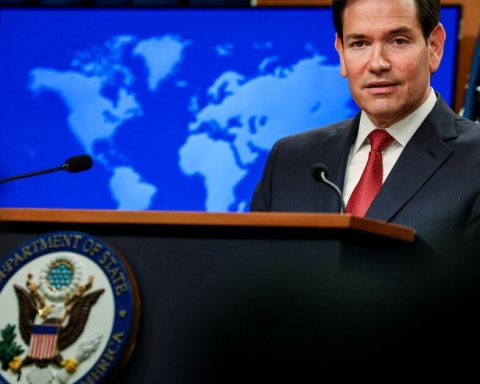While the attention of Governmentunions and unions are in building the projects of the labor and pension reformindividuals and companies are already feeling the impact of the tax approved at the end of 2022 and which came into effect on January 1.
For Jaime Vargas, EY Latin America North Markets Lead PartnerThere are several effects that the law already has on firms and citizens, but there are also several challenges in terms of collection.
In these two months, what have been the effects of the reform?
The tax reform is financed mainly by companies belonging to some economic sectors and by natural persons of a certain level of income. The first ones will begin to feel the big impacts when they have to pay the income tax corresponding to 2023, since it is at that moment that they will see the effects of the rejection of the deduction for extractive industries royalties and the surcharges imposed on certain sectors. .
As for natural persons, the impact will be felt sooner, because the effect of the elimination and limitation of deductions will be reflected in the withholding that employees receive from their salaries. And the impact of other taxes that affect individuals directly or indirectly, such as consumption taxes, or that have a general impact on the supply chain, such as the plastic tax, are already being felt or will gradually begin to be felt over time. throughout the year
(Labor and pension reforms would be agreed against the clock).
During the process of the project, they talked about the risk in investments, how much can it affect the corporate sector?
The first risk investors look at is country risk. I think that the fact that the tax reform was approved brings a message of stability to public finances, and that is good. But, on the other hand, when deciding on an investment, investors analyze what the return will be, and on that basis they make decisions.
From this point of view, we are always competing with other countries. Although the tax burden is not the only element that is analyzed, it is one of the main ones. The 35% rate that we already brought, added to the increase in the tax on dividends from 10% to 15% and other local taxes, the impossibility or difficulty of accrediting certain taxes and so on, once again leaves us at a disadvantage.
(Labor and pension reform: discussion commission is installed on Monday).
After the reform, what corporate rate are companies really paying?
The nominal fee remains 35%, with a few exceptions. But from the point of view of the foreign investor, the combined company-shareholder nominal fee is 44.75%. This rate is higher than that of those countries from which it is usually invested, that is, of capital exporters, so that the tax credit that they can obtain in their countries in relation to the tax paid in Colombia, does not Allows you to credit the entire tax paid.
However, there are some double taxation agreements that Colombia has signed that allow reducing the impact of the tax on dividends, which allows somewhat better conditions for investors residing in those countries, in addition to a certain stability in tax matters. . I believe that it is very important to redouble efforts in the negotiation and signing of agreements to somewhat reduce the lack of competitiveness of our tax system.
(Health reforms: similarities and differences between the government and the opposition).
What impact can the lawsuits for unconstitutionality that the law has received have?
The impact of some of the lawsuits, if they are decided in favor of the plaintiffs, can be very significant.
A significant part of the additional resources that are being generated with the reform are based on norms that have already been demanded, such as, for example, the one that prohibits the rejection of the deduction of royalties to the extractive industries. The declaration of unconstitutionality of these provisions would create a large hole in the national budget.
The reform has an ambitious goal in evasion control, do you see it viable?
For years, many of us have pointed out that the main problem of the Colombian tax system, beyond the existence of preferential treatments that by the way practically no longer exist, is evasion. The goal is ambitious, yes. It requires a lot of effort, but above all large investments in human capital and technology, to reach certain sectors of the economy where tax evasion is rampant.
I hope that it can be fulfilled, the financing of the State depends to a large extent on it. There is a long way to go towards more efficient controls on taxes such as VAT. The great enemy of productivity continues to be informality, which is so high in our country. It results in behaviors that are not only prone to evasion, but also clearly unfair competition with formal competitors.
Do you think another tributary will be needed?
I hope not, or that if there is, it is to reduce the tax burden instead of increasing it again. There isn’t much room anymore to seek contributions from businesses and people who pay their taxes.
However, taking into account that several of the measures that were approved and that generate collection are of a temporary nature, it will surely be necessary to see where to obtain additional resources to replace those generated by these temporary charges if the control of evasion or the greater profits of companies in an economy that is reactivating cannot generate them.
It is an important task that several governments have had in the past and it has not been possible to carry it out. It is necessary to strengthen the collection capacity of the territorial entities and for this the reform is necessary; and also to alleviate the burden of taxpayers, who have to suffer on many occasions the difficulties generated by operating in hundreds of municipalities with laws that despite their similarities are different.
Unify, modernize and harmonize territorial systems is a small part of the task; but the most important thing is to provide territorial entities with human and technological capacities so that they can fulfill their role… If this is not achieved, the reform will always remain halfway.
LAURA LUCIA BECERRA ELEJALDE
Journalist Portfolio


















